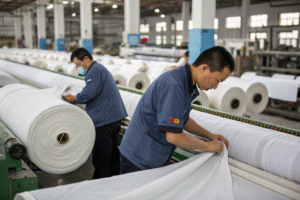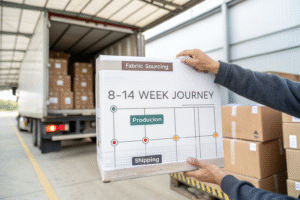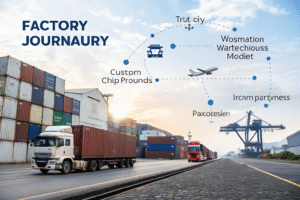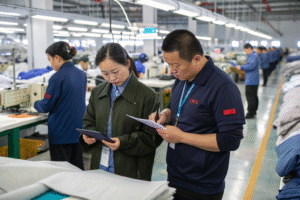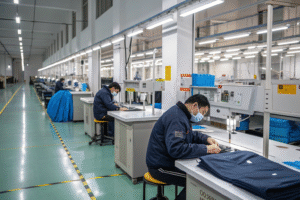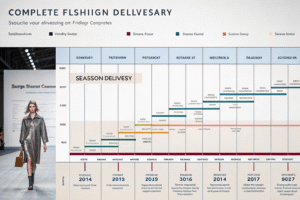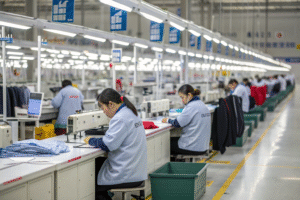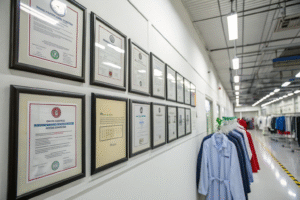Logistics plays a crucial role in the apparel industry, ensuring that products move efficiently from manufacturers to consumers. What exactly does logistics entail, and how does it impact the industry? Let’s explore the key stages, challenges, and best practices.
Logistics in the apparel industry involves managing the flow of goods, from raw materials to finished products. It includes transportation, warehousing, inventory management, and distribution, all of which are essential for timely and cost-effective delivery.
Now, let’s dive deeper into the key stages of apparel logistics, its impact on profitability, and best practices for inventory management.
Key Stages of Apparel Supply Chain Logistics
What are the key stages of logistics in the apparel supply chain, and how do they function?
The key stages of apparel supply chain logistics include sourcing, production, warehousing, transportation, and distribution. Each stage is crucial for ensuring that products reach consumers efficiently.

How Does Sourcing Impact Logistics?
Sourcing involves obtaining raw materials and components for production. Here’s how it impacts logistics:
- Supplier Relationships: Strong relationships with suppliers ensure timely delivery of materials.
- Cost Management: Efficient sourcing reduces material costs and transportation expenses.
- Quality Control: Reliable suppliers provide high-quality materials, reducing production issues.
Effective sourcing is the foundation of smooth logistics.
What Happens During Production Logistics?
Production logistics involves managing the flow of materials and products within the manufacturing process. Here’s what happens:
- Material Handling: Transporting materials to production facilities.
- Workflow Optimization: Ensuring efficient movement of materials and products within the factory.
- Quality Assurance: Inspecting products at various stages to maintain quality.
Production logistics ensures that manufacturing runs smoothly and efficiently.
How Logistics Impacts Fashion Brand Profitability
How does logistics affect the profitability of fashion brands? What are the key factors to consider?
Logistics impacts profitability by influencing production costs, delivery times, and customer satisfaction. Efficient logistics can reduce costs and improve customer experience, boosting profitability.

Why is Transportation Cost Management Important?
Transportation costs are a significant part of logistics expenses. Here’s why managing them is crucial:
- Cost Savings: Efficient transportation reduces shipping costs.
- Timely Delivery: Reliable transportation ensures products reach customers on time.
- Customer Satisfaction: Fast and reliable delivery enhances customer experience.
Managing transportation costs is key to maintaining profitability.
How Does Warehousing Affect Profitability?
Warehousing plays a critical role in logistics and profitability. Here’s how it impacts your business:
- Storage Costs: Efficient warehousing reduces storage expenses.
- Inventory Management: Proper warehousing ensures accurate inventory tracking.
- Order Fulfillment: Well-organized warehouses enable faster order processing.
Effective warehousing improves efficiency and reduces costs.
Common Logistics Challenges in Clothing Production
What are the common logistics challenges in clothing production, and how can they be addressed?
Common logistics challenges include supply chain disruptions, inventory management issues, and transportation delays. Addressing these challenges requires strategic planning and efficient management.

How Do Supply Chain Disruptions Affect Logistics?
Supply chain disruptions can delay production and increase costs. Here’s how they impact logistics:
- Material Shortages: Delays in fabric or material delivery can halt production.
- Logistics Issues: Transportation delays affect timely delivery of finished products.
- Cost Increases: Disruptions often lead to higher costs for materials and shipping.
Managing supply chain risks is crucial for smooth logistics.
Why is Inventory Management a Challenge?
Inventory management is a common challenge in logistics. Here’s why it’s difficult:
- Demand Forecasting: Predicting customer demand accurately is challenging.
- Stockouts: Running out of popular items can lead to lost sales.
- Overstocking: Excess inventory increases storage costs and waste.
Effective inventory management is essential for balancing supply and demand.
Best Practices for Apparel Inventory Management
What are the best practices for managing inventory in the apparel industry? How can you optimize your inventory processes?
Best practices for apparel inventory management include demand forecasting, just-in-time inventory, and using technology. These strategies help reduce costs and improve efficiency.

How Does Demand Forecasting Help?
Demand forecasting involves predicting customer demand to optimize inventory levels. Here’s how it helps:
- Accurate Stock Levels: Ensures you have the right amount of inventory.
- Reduced Waste: Minimizes overstocking and unsold items.
- Improved Planning: Helps plan production and purchasing more effectively.
Demand forecasting is essential for efficient inventory management.
Why is Just-in-Time Inventory Effective?
Just-in-time (JIT) inventory involves ordering materials and producing goods only as needed. Here’s why it’s effective:
- Cost Savings: Reduces storage and holding costs.
- Efficiency: Streamlines production and reduces waste.
- Flexibility: Allows for quick adjustments based on demand.
JIT inventory is a cost-effective and efficient strategy.
Conclusion
Logistics is a critical component of the apparel industry, impacting everything from production costs to customer satisfaction. By understanding the key stages, challenges, and best practices, you can optimize your logistics processes and improve your brand’s profitability.




